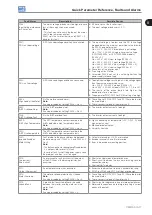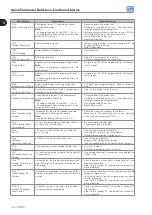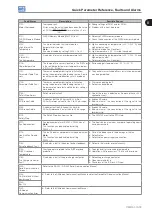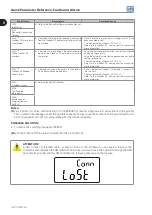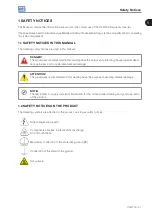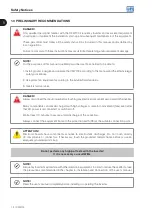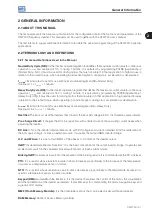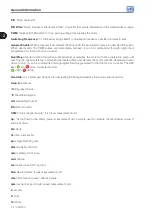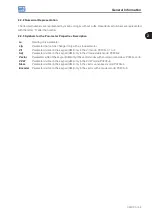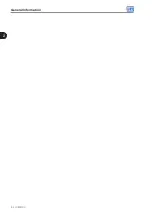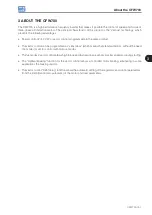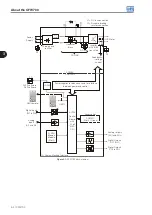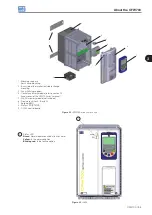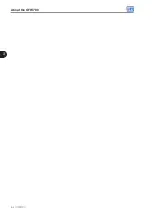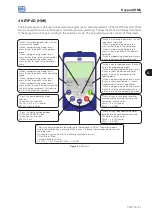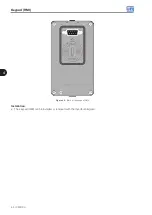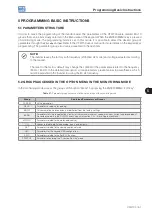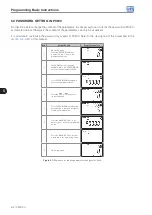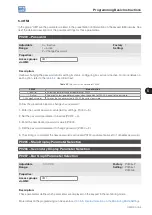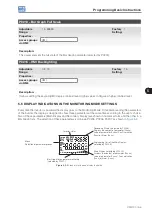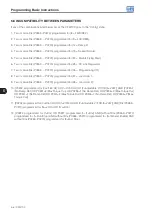
2
General Information
CFW700 | 2-1
2 GENERAL INFORMATION
2.1 ABOUT THIS MANUAL
This manual presents the necessary information for the configuration of all of the functions and parameters of the
CFW700 Frequency Inverter. This manual must be used together with the CFW700 user's manual.
The text intents to supply additional information to facilitate the use and programming of the CFW700 in specific
applications.
2.2 TERMINOLOGY AND DEFINITIONS
2.2.1 Terms and Definitions Used in the Manual
Normal Duty Cycle (ND):
It is the inverter operation regimen that defines the maximum current value for continuous
operation I
nom-ND
and overload of 110 % during 1 minute. It is selected by programming P0298 (Application)=0
(Normal Duty – ND). It must be used for driving motors that are not subject in that application to high torques in
relation to their rated torque, when operating in permanent regimen, during start, acceleration or deceleration.
I
nom-ND
:
Inverter rated current for use with normal overload regimen (ND=Normal Duty).
Overload: 1.1 x I
nom-ND
/ 1 minute.
Heavy Duty Cycle (HD):
It is the inverter operation regimen that defines the maximum current value for continuous
operation I
nom-HD
and overload of 150 % during 1 minute. It is selected by programming P0298 (Application)=1
(Heavy Duty (HD)). It must be used for driving motors that are subject in that application to high overload torques
in relation to their rated torque, when operating in constant speed, during start, acceleration or deceleration.
I
nom-HD
:
Inverter rated current for use with heavy overload regimen (HD=Heavy Duty).
Overload: 1.5 x I
nom-HD
/ 1 minute.
Rectifier:
The input circuit of the inverters that converts the input AC voltage into DC. It is formed by power diodes.
Pre-charge Circuit:
It charges the DC Link capacitors with a limited current, thus avoiding current peaks when
powering the inverter.
DC Link:
This is the inverter intermediate circuit, with DC voltage and current, obtained from the rectification of
the AC supply voltage, or from an external source; it supplies the output IGBTs inverter bridge.
U, V and W Arm:
It is a set of two IGBTs of the phases U, V and W at the inverter output.
IGBT:
“Insulated Gate Bipolar Transistor”; It is the basic component of the output inverter bridge. It operates like
an electronic switch in the saturated (closed switch) and cut (open switch) modes.
Braking IGBT:
Operates as a switch for the activation of the braking resistor. It is commanded by the DC Link level.
PTC:
It’s a resistor whose resistance value in ohms increases proportionally to the increase of the temperature;
it is used as a temperature sensor in motors.
NTC:
It’s a resistor whose resistance value in ohms decreases proportionally to the temperature increase; it is
used as a temperature sensor in power modules.
Keypad (HMI):
Human-Machine Interface; It is the device that allows the control of the motor, the visualization
and the modification of the inverter parameters. It presents keys for commanding the motor, navigation keys and
a graphic LCD display.
MMF (Flash Memory Module):
It is the nonvolatile memory that can be electrically written and erased.
RAM Memory:
Random Access Memory (volatile).
Summary of Contents for CFW700
Page 2: ......
Page 4: ......
Page 8: ...Summary...
Page 34: ...2 General Information 2 4 CFW700...
Page 38: ...3 About the CFW700 3 4 CFW700...
Page 56: ...7 Starting up and Settings 7 4 CFW700...
Page 58: ...8 Available Control Types 8 2 CFW700...
Page 78: ...10 VVW Control 10 8 CFW700...
Page 158: ...13 Digital and Analog Inputs and Outputs 13 28 CFW700...









